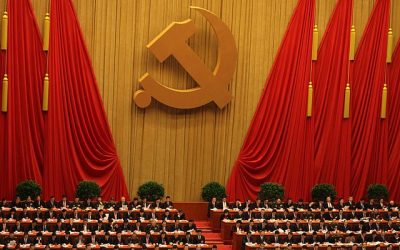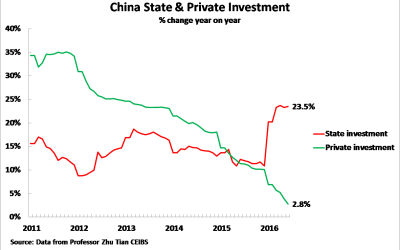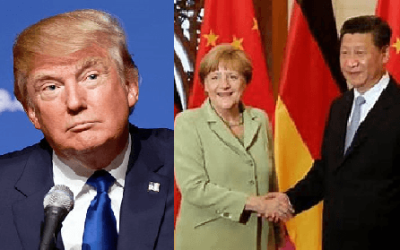This article on the 20th Congress of the Communist Party of China (CPC) originally appeared in a Chinese version at Guancha.cn.
* * *
For China, naturally, the 20th Congress of the Communist Party of China (CPC) was an event of decisive importance for its own country – it will determine China’s course not only for the next five years but in reality for far longer. But this Congress was also an event of great significance internationally – as reflected, to take first a relatively superficial measure, in the large international media coverage it received. But these facts are interrelated. It is the enormous practical achievements of China, and therefore China’s increasingly great weight in the world, which created so much international attention.
Leaving aside superficial measures, such as the scale of media coverage, how are the CPC’s achievements to be characterised in a precise sense? This is a matter of importance not only for China but internationally.
Going beyond immediate issues dealt with at the Congress, the characterisation which should be given, with no exaggeration, is that in the slightly more than a century since its creation the CPC has not only led China’s “national rejuvenation” but has achieved the greatest improvement in the lives of the largest number of people of any political party in human history. The CPC is, therefore, the world’s most successful political party from the viewpoint of benefitting the greatest proportion of humanity. This was summarised at the 20th Congress. It should be clearly understood and explained both within China and internationally. As such a characterisation is clearly one regarding extremely serious matters, exaggeration in any direction is misleading and dangerous – there is no virtue in optimism, no virtue in pessimism, no virtue in excessive modesty, no version in boasting, only a virtue in realism. The aim of this article is to stand back from the most immediate events and to show, through international comparisons that these characterisations are not a rhetorical exaggeration, but a simple statement of fact.
To analyse this, first, the CPC’s practical achievements will be compared in international terms – going beyond immediate issues to place these in a fundamental long term historical perspective. Then an analysis of the scale of the scale of the achievements in ideas, in theory, that were necessary to bring this about will be made.
The practical national achievement of the CPC
To succinctly appreciate the gigantic historical scale of the CPC’s achievements in international terms it is first necessary to accurately understand how poor China was in 1949 when the People’s Republic of China (PRC) was created – this poverty and national subjugation being a product of more than a century of domination by foreign powers. Regarding its inability to determine its own national future in such a situation, as is almost universally known, China for those hundred years was trampled on by foreign powers and armies which occupied large parts of its national territory and ruthlessly interfered with or entirelly overrode its own laws and government. China for this century therefore was incapable of determining its own fate. This foreign intervention, in turn, helped create the conditions for China’s civil wars. As a consequence of this century long historical disaster, on the calculations of Angus Maddison, the world’s top specialist on long term economic development, by 1949 only 10 countries in the world had lower per capita GDPs than China – two in Asia (Myanmar and Mongolia), eight in Africa (Botswana, Burundi, Ethiopia, Guinea, Guinea Bissau, Lesotho, Malawi, Tanzania). A mere two percent of the world population lived in countries with a lower per capita GDP than China!
In only slightly over seventy years, that is within a single lifetime, with the creation of the PRC, the CPC’s leadership totally transformed this situation of China. Today, the power of the People’s Liberation Army (PLA), based on the foundation of China’s economic strength, means no country dares militarily attack China. China, as is well known, has almost completely regained its territorial integrity – all foreign concession territories in China are abolished, Hong Kong and Macao have reunified with China, only the US manipulated Taiwan province still remains to be regained practical control of and that is only a matter of time given China’s development.
Turning from the measures establishing national sovereignty to the criteria of economic development, China has achieved by far the greatest “economic miracle” in world history. China has experienced the most rapid sustained growth of any major country in human history. It has already achieved “moderate prosperity” by its own national criteria.
But here again particularly revealing are the international comparisons. In only two to three years’ China will become a “high income” economy by standard World Bank international classification. Such a transition from almost the world’s poorest country to a high-income economy, for over 1.4 billion people, that is almost one fifth of the world’s population, in only slightly over 70 years, has literally no equal in world history. If the rest of the world, particularly developing countries, could emulate China’s achievement very many of the most decisive problems facing humanity would be solved.
To clearly summarise the unprecedented international scale of China’s achievement, Table 1 shows, in chronological order, major countries which have undergone rapid economic growth by the standards of their historical period – this being the precondition for the goal of rapid increases in living standards.
- The first country to experience sustained rapid economic growth was Britain, in the Industrial Revolution, with 2.0% of the world’s population.
- Sustained rapid US economic growth, after its Civil War, was in a country with 3.2% of the world’s population.
- When Soviet rapid industrialisation began at the end of the 1920s the USSR contained 8.4% of the world’s population.
- Japan’s rapid post-World War II growth was in a country with 3.3% of the world’s people.
- The growth of the four ‘Asian Tigers’ (Hong Kong, Singapore, South Korea, and Taiwan Province) was in economies which together only comprised 1.4% of the world’s population.
No other economy commencing sustained rapid economic growth therefore even comes close to the 22% of the world’s population in China in 1978 when its very rapid economic growth began. China’s share of world population at that time was seven times the relative percentage of the world’s population of the US or Japan when they experienced rapid economic growth and almost three times that of the USSR, the largest country which had previously begun such growth.
Table 1
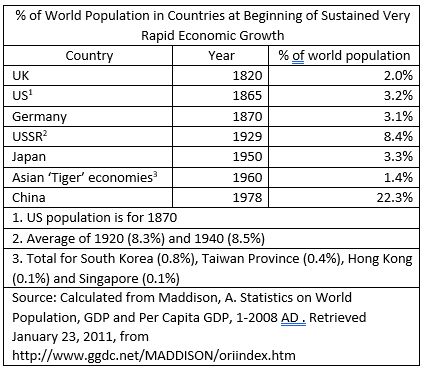
Unequalled increase in living standards
Turning from directly economic data to the goal of such development in the welfare of human beings, China since 1978 has achieved the fastest sustained increasing in living standards of any major country. From 1978 to 2020, the latter year being the latest for which internationally comparable World Bank data is available, China’s average annual increase in household consumption was 7.5% – for comparison in the same period the US’s annual average increase was 2.7%.
In terms of poverty alleviation China’s achievement is without any equal in the world. By its national criteria China has eliminated absolute poverty, while by World Bank criteria it has taken 853 million people out of internationally defined poverty – over 70% of those raised from poverty in the world.
The literally epoch-making international consequences of such economic and social achievements by China may be summarised in a single statistic. At present 16% of the world’s population enjoys the human advantages of living in “high-income” economies by World Bank definition. But China by itself is almost 18% of the world’s population. In short when, in only two- or three-years’ time, China becomes a high-income economy by World Bank criteria, China will have lifted more people to living in high-income economies than all other countries in human history put together – with all the improvements in human life that represted. This is why it was strictly accurately stated at the beginning, without exaggeration, that: “The Communist Party of China (CPC) has led not only China’s national rejuvenation but the greatest improvement in the lives of the largest number of people of any political party in human history”
The basis of the achievements of the CPC
If the achievements of the CPC in improving the conditions of human beings are unparalleled the question is then obviously how was this achieved, what made it possible? This leads to an accurate measure of the achievements of the CPC in ideas, in theory.
As is well known the CPC was founded under the impact of the 1917 Russian revolution, the first successful socialist revolution – which took place in an imperialist country. This fact, and the ideas of Marxism-Leninism which were learnt from these events, was on the one hand an immense initial advantage for China – as these were the world’s most advanced economic, social and political ideas, the practicality and success of which had been proved by the 1917 revolution. But simultaneously, because these ideas were international, and not specifically developed for China, the CPC then had to undertake a long historical process of the “Sinicization” of Marxism – to integrate the analyses of Marxism, developed not only in a different country but in a different continent, with an understanding of China’s specific reality.
This led to mistakes by the CPC in its early period. As Xi Jinping noted: “The young Communist Party of China once simply applied the general principles of Marxism-Leninism on the proletarian revolution and copied the experience of the Russian October Revolution in the urban armed uprisings, without fully considering China’s national conditions and the reality of the Chinese revolution, causing the Chinese revolution to suffer serious setbacks.” 1
This, and other major errors, resulted in the defeat of the urban based Chinese revolutionary wave in 1927. It was following this defeat that Mao Zedong progressively took undisputed leadership of the CPC. Mao Zedong’s new strategy centred on a rural based revolution and victoriously culminated in the creation of the PRC in 1949.
To attain this success, the consequences of which continue to transform the world, the CPC confronted numerous new issues requiring the development of Marxism. Simply to list a few of the works of Mao Zedong in this period – “Analysis of the Classes in Chinese Society”, “Report on an Investigation of the Peasant Movement in Hunan”, “On Practice”, “On Contradiction”, “On Protracted War”, “On New Democracy”, “On the People’s Democratic Dictatorship” – shows the extraordinary development of Marxism to achieve this victory. This work expressed both the CPC’s foundation in Marxism and a development of Marxism.
The CPC, led by Mao Zedong, accomplished something which had never previously been achieved in human history – to establish a socialist state in a developing country. This, as analysed above, achieved both the re-establishment of China’s sovereignty and an immense improvement in the life of the Chinese people. Simply to take the single most important overall indicator of living conditions, average life expectancy, China during 1949 to 1976, the latter being year of Mao Zedong’s death, underwent the most rapid increase in life expectancy in a major country in human history. In summary China under Mao Zedong achieved first a national and socialist revolution and then a literal social miracle.
The historical scale of this achievement may be characterised succinctly. Lenin had shown how socialism could be created in an imperialist country – thereby creating Marxism-Leninism. Mao Zedong and the CPC for the first time showed how the working class could take power and begin to construct socialism in a developing country. As Xi Jinping put it: “building socialism in a semi-colonial and semi-feudal society like ours is an unprecedented undertaking.“2 This established Mao Zedong, together with Lenin, as the most important developer of Marxism since Marx and Engels themselves. If the CPC had achieved nothing more then this was an extrordinary development of Marxism. But in fact a second extraordinary achievement, both in practice and theory, was to come for the CPC – centred on China’s transformations from 1978 onwards.
From World War II to the crisis of the mid-1970s
To accurately understand the historic scale of the CPC’s achievement with “Reform and Opening up” from 1978 it is necessary to grasp the global development which unfolded during the decade of the 1970s – the crisis and transformations in both the capitalist and socialist systems which took place at that time.
Starting with the transformations in capitalism, this substantially changed the situation which had existed since World War II. Prior to that war, the great crisis of the 1930s, which culminated in the Second World War itself, was dominated by two economic features. First domestic investment collapsed, second international trade and investment radically declined. Expressed in Marxist terms, therefore, from 1929 to World War II socialisation of labour was drastically reduced, leading to the prediction of a huge decline in production – which duly occurred.
Regarding socialism, in the 1930s the USSR shared the characteristic of the capitalist countries that it was a relatively internationally isolated economy. However, due to the fact it had been created by a socialist revolution, the USSR’s level of domestic investment did not fall but actually rose. Due to this fundamental advantage compared to capitalism, as Marxism would predict, the USSR far outperformed the capitalist economies during the 1930s. The Soviet Union also recovered rapidly from the devastation of World War II – by 1948 Soviet production had already regained pre-war production levels.
To make these achievements, the Soviet Union developed from 1929 onwards an economic structure based on a relatively nationally self-contained economy, with almost its entirety, down to small enterprises and shops, taken into the state sector, the collectivisation of agriculture, and the administrative setting of prices for almost all goods in the economy. This economic structure achieved the rapid industrialisation of the USSR and its decisive role in the defeat of German Nazism.
But in contrast to this situation of the 1930s, following World War II a massive global reorganisation of the capitalist system took place. Under US hegemony the fragmentation of the world capitalist economy, which had existed in the 1930s, was overcome and a sixty-year period of globalisation took place – the percentage of trade in world GDP peaking at over 60% in 2008. In Marxist terms this meant a huge international socialisation of labour was taking place, which would be predicted to lead to an increase in production – which duly occurred. Simultaneously, a major increase in the percentage of domestic fixed investment in GDP took place in major capitalist economies such as Japan and German, and then in the so-called Asian Tigers. This historical socialisation of labour, both in international trade and in fixed investment, in Marxist terms would also be predicted to lead to an increase in the rate of economic growth. Exactly as would be predicted by Marxism, Germany in the 1950s and the early 1960s, Japan from the late 1940s to the early 1970s, and the Asian Tigers from the 1960s until the late 1990s, achieved prolonged rates of growth faster than those ever previously experienced by major capitalist economies.
The crisis in the USSR
Confronted with this prolonged rapid growth of capitalism the USSR, however, did not change its economic structure. While domestic investment remained high the Soviet Union remained a relatively nationally self-contained economy, that is, it remained relatively cut off from the international socialisation of labour, it retained essentially 100% state ownership of the urban economy, agriculture remained collectivised, and prices remained set by the state, not by market mechanisms. Therefore, for reasons which there is not space to go into here, but which have been outlined elsewhere, the USSR retained an economic structure which did not correspond to that which Marx had analysed as developing during the first phases of the construction of socialism.
The historical result was that whereas in the 1930s and the early 1950s the Soviet economy had grown more rapidly than the capitalist economies, in particular the US, by the 1960s the USSR was no longer growing more rapidly than the United States. By the mid-1970s the Soviet economy was actually growing more slowly than the US – see Figure 1. In summary, by the mid-1970s the Soviet economy had entered a serious crisis.
Figure 1
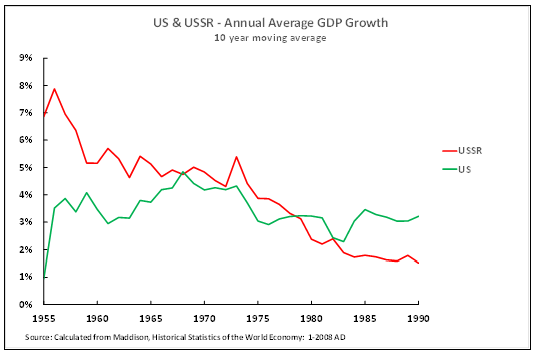
China’s Reform and Opening Up
As a result of these simultaneous developments the mid-1970s, therefore, saw a fundamental simultaneous crisis and turning point in both the capitalist system and the then largest socialist state, the Soviet Union. Regarding the latter it was clear, as already seen, that by the mid-1970s the post-1929 Soviet economic model, whatever its strengths in the military conflict with Nazi Germany, was not successful in the long-term competitive struggle with US capitalism. The different responses made to this reality by the USSR and China, led by the CPC, determined the fundamental course of world geopolitics, and of world socialism, from this point onwards.
In 1978 China launched “Reform and Opening Up”, the fundamental economic features of which were:
- Instead of aiming at a self-enclosed economy, China began to “open up”, that is to aim at participating in international trade and investment – in Marxist terms, China began to aim at participation in international socialisation/division of labour.
- Agriculture was decollectivized, with the household responsibility system replacing the communes.
- The essentially 100% statified urban economy was abandoned with the largest, and most socialised, units of production being retained in the state sector and non-state economic development taking place alongside this and in other sectors – the policy of “grasping the large and letting the small go” (Zhuā dà fàng xiǎo) was embarked on.
- “Payment by work” was established as the fundamental basis of remuneration.
- Prices were progressively liberalised, and a socialist market economy introduced.
In summary, China moved towards an economic structure which corresponded to that outlined by Marx for the long-term development of the initial stage of of socialism – as opposed to that of the post-1929 USSR. But while theoretically this structure had been foreseen by Marx in practice this was a long-term economic system which had never previously existed in human history. So China’s economic reform was simultaneously theoretically strictly in line with Marx and in practice an unprecedented innovation – the integration of these two aspects representing a Marxist triumph by the CPC. It produced, as already analysed, the most rapid economic development in human history – in summary it showed that Marx worked.
The historic consequences of Reform and Opening Up
To accurately grasp the gigantic significance of this second historic achievement by the CPC it may be noted that only three fundamental economic structures have existed in the last five centuries.
- The first was capitalism, invented by no theorist but first analysed by Adam Smith and Marx.
- The second, created in the USSR after 1929, was the “administered economy”.
- The third was China’s socialist market economy.
It was the last of these which, as has been seen, has proved the most successful economic structure in human history.
In order to see just how successful this socialist market economy structure was Figure 2 shows economic development in China, the USSR, the US and the world from 1950, which may be taken as the end of the post-war reconstruction period in the USSR and the beginning of development of the PRC, until the collapse of the Soviet Union in 1991. During this period total Soviet economic growth was 220% – faster than the U.S.’s 154% but not above the world average of 227%. It may be seen that in the same period China’s economic growth was essentially the same as the USSR – a 224% expansion. In summary, until the mid-1970s China’s economy grew at approximately the same rate as the USSR and the world. Therefore the 1949-78 period saw a social miracle in China, with enormous steps forward in the living standards of the population, reflected in the fastest increase in life expectancy in a major country in human history, and the foundations of industrialisation of the economy were laid, but China did not experience particularly rapid economic growth by international standards.
As China’s economic structure in this period had strong similarities to the USSR it is unsurprising that China’s rate of economic growth was also approximately in line with the USSR. The social achievements in China in 1949-78, registered in its increase in life expectancy, were a literal “miracle”, the greatest in any country in human history, but the economic record was not its equal. The foundations of an industrialised economy were laid but the overall economic growth rate was not exceptional by international standards. However, as may be seen, after 1978 China’s rate of economic growth far exceeded that of the US, the USSR or the world – creating the economic miracle which has already been analysed.
China’s economic reform from 1978 was therefore the second extraordinary and historically unprecedented achievement of the CPC – following the process which had led to the creation of the PRC and its early development. Xi Jinping put it in the following terms: “Comrade Deng Xiaoping said: ‘Reform is China’s second revolution.’ It has been 40 years since the reform and opening up, and we have been practicing and exploring. A series of revolutionary changes have been carried out in China, system and culture, opened up the road of socialism with Chinese characteristics, and made our country’s development catch up with the times with great strides.”
With “Reform and Opening up” China not merely saved itself from disaster, the fate which befell the USSR, but it saved world socialism. As Xi Jinping put it: “The great success of socialism with Chinese characteristics in China shows that socialism has not perished, nor will it perish, and that it is flourishing with vitality and vigor. The success of scientific socialism in China is of great significance to Marxism and scientific socialism, and to socialism in the world. It is conceivable that if socialism had not achieved the success in China today, if the leadership of the Chinese Communist Party and our socialist system had also collapsed in the domino change of the collapse of the Soviet Union, the fall of the Soviet Communist Party, and the dramatic changes in Eastern Europe, or had failed for other reasons, then the practice of socialism might again have to wander in the darkness for a long time, and again as a ghost, as Marx said wandering in the world.”3
This constituted the second historically unprecedented achievement of the CPC.
Figure 2

Xi Jinping Thought on Socialism with Chinese Characteristics for a New Era
Finally, the 20th CPC Congress is part of the third great step by the CPC. China’s enormous cumulative success over the decades after the launching of China’s Reform and Opening Up in turn created a “new era” for China – and now internationally. In terms of the wellbeing of its own population, as already noted, after securing national independence China achieved “moderate prosperity” by its national criteria by 2020 and is on the verge of becoming a high-income economy by World Bank international classification. In internationally comparative terms China achieved the fastest sustained growth of any country in human history and became the world’s second largest economy, as measured at market exchange rates, and the world’s largest economy as measured by purchasing power parities (PPPs).
These transformations therefore necessarily radically altered the situation of China both internationally and domestically. As Xi Jinping put it: “Since the 18th National Congress of the Communist Party of China, socialism with Chinese characteristics has entered a new era, and the Chinese nation has ushered in a great leap from standing up, becoming rich, and becoming strong.”4 This was a further development in the building of socialism. Xi Jinping stated this unambiguously: “The flag determines the direction, and the road determines the destiny. If the path is wrong, we will not only fail to achieve our goals, but may even interrupt the process of the great rejuvenation of the Chinese nation. The 19th National Congress of the Communist Party of China made a major political conclusion that socialism with Chinese characteristics has entered a new era. We must realize that this new era is a new era of socialism with Chinese characteristics, not any other new era. In order to realize the party’s historical mission in the new era in a new historical position, the most fundamental thing is to hold high the great banner of socialism with Chinese characteristics.” 5
It is this new situation which was analysed, in Chinese terms, as “Xi Jinping Thought on Socialism with Chinese Characteristics for a New Era” This showed the same feature as the CPC’s previous achievements – being simultaneously in line with Marxism and developing Marxism.
The CPC’s 20th Party Congress
In his report to the 20th Party Congress Xi Jinping dealt at length with this relation of the CPC and Marxism. Because these remarks are important not only in China but internationally, and because they sum up the experience of the CPC, it is clarificatory to quote them at length.
“Marxism is the fundamental guiding ideology upon which our Party and our country are founded and thrive. Our experience has taught us that, at the fundamental level, we owe the success of our Party and socialism with Chinese characteristics to the fact that Marxism works, particularly when it is adapted to the Chinese context and the needs of our times. The sound theoretical guidance of Marxism is the source from which our Party draws its firm belief and conviction and which enables our Party to seize the historical initiative.
“Adapting Marxism to the Chinese context and the needs of the times is a process of seeking, revealing, and applying truth. With new changes and practical demands emerging both in and outside of China since the 18th National Congress, there was an urgent need for us to provide in-depth theoretical and practical answers to a series of epochal questions on the cause of the Party and the country as well as the Party’s governance of China… ,
“Our Party has, from an entirely new perspective, deepened its understanding of the laws that underlie governance by a communist party, the development of socialism, and the evolution of human society. It has achieved major theoretical innovations, which are encapsulated in the Thought on Socialism with Chinese Characteristics for a New Era…
“To uphold and develop Marxism, we must integrate it with China’s specific realities. Taking Marxism as our guide means applying its worldview and methodology to solving problems in China… We must base everything we do on actual conditions and focus on solving real problems arising in our reform, opening up, and socialist modernization endeavors in the new era. We must keep responding to the questions posed by China, by the world, by the people, and by the times; in doing so, we should find the right answers suited to the realities of China and the needs of our day, reach conclusions that are compatible with objective laws, and develop new theories that are in step with the times, so as to provide better guidance for China’s practice…
“It is the solemn historical responsibility of today’s Chinese Communists to continue opening new chapters in adapting Marxism to the Chinese context and the needs of the times…
“The success of Marxism in China has been realized by Chinese Communists through our own endeavors. One point underpinning these successes is that China’s issues must be dealt with by Chinese people in light of the Chinese context. We must remain firm in our conviction in Marxism and socialism with Chinese characteristics and strengthen our confidence in the path, theory, system, and culture of socialism with Chinese characteristics. With a stronger sense of historical responsibility and creativity, we should make greater contributions to the development of Marxism…
“We must uphold fundamental principles and break new ground. We are advancing a great cause that none have attempted before. Only by upholding fundamental principles can we avoid losing our bearings or making catastrophic mistakes. Only by breaking new ground can we meet the call of the day and shape the trends of our times. We should approach Marxism with a respect for science and in the spirit of seeking truth. We must never waver in upholding the basic tenets of Marxism.”6
This in turn determined the interrelation of the CPC with international developments: “We must maintain a global vision. The Communist Party of China is dedicated to pursuing happiness for the Chinese people and rejuvenation for the Chinese nation. It is also dedicated to human progress and world harmony. We should expand our global vision and develop keen insight into the trends of human development and progress, respond to the general concerns of people of all countries, and play our part in resolving the common issues facing humankind.”7
The CPC’s development precisely corresponds to this. Starting with the fundamental principles of Marxism the CPC developed these to show, embodied in “Mao Zedong Thought”, how for the first time in history a socialist revolution could be carried out in a developing country – in the most populous country in the world. Then, in Reform and Opening Up, China showed how in practice to create an historically unprecedented economic system which has produced the most rapid sustained growth in human history – and in so doing achieved for its people the most rapid increase in incomes in a major country in a world history, and the greatest poverty elimination in the world, and simultaneously saved world socialism. Third, in its analysis of the new era the CPC has dealt with both the issues and the successes created by the successes of these previous phases of development, and the emergence of China as a central force in world politics and its transition to a high income economy by world standards.
Anyone of these achievements would have been epoch making. To have made the three in succession is the longest period of achievement and innovation by any socialist political party in world history.
This process is still continuing
Finally, it should be noted that this process is still continuing. There are numerous features of which are crucial for China, but perhaps three could be selected as examples because of their international importance?
First, due to China’s enormous development it has moved into the centre of international affairs. This made it crucial to develop an overall strategic framework for China’s foreign policy based on the key features of international relations. This was set out in Xi Jinping’s concept of a “common future of humanity”.
A second key example is the development of the concept of “Common Prosperity”. The goal of this is not at all limited to purely economic objectives. Its aims are far wider, including to ensure the rise in the living standards of the Chinese people, to increase social cohesion and political stability, and thereby to play an overall fundamental role in China’s national rejuvenation. Xi Jinping noted: “Achieving common prosperity is a defining feature of socialism with Chinese characteristics.”8 But the policy of Common Prosperity can also be clearly understood from an economic viewpoint, and its striking originality and its continuity with Marxist theory is particularly clear. It is a further key example of the way the CPC simultaneously strictly in line with Marxism and highly innovative in Marxism.
A third example may be taken as the CPC’s addressing a crisis facing humanity which has become qualitatively more acute since the party’s creation. This is the ecological crisis, above all climate change. Xi Jinping stated this bluntly: “Since humanity entered the industrial age, rapid traditional industrialization, while bringing about great material wealth, has accelerated the consumption of natural resources, and broken the original cycle and balance of the ecosystems, resulting in a tense relationship between humanity and nature.” The consequences of continuing down such a path would be inevitable. As it was put in Xi Jinping’s speech to the 20th Party Congress: “Humanity and nature make up a community of life. If we extract from nature without limit or inflict damage on it, we are bound to face its retaliation.”9 It is for this reason that the concept of eco-civilization is of fundamental importance not only domestically by internationally – as set out at the 20th Congress.
Conclusion
To summarise, in order to achieve its astonishing practical accomplishments China had to develop positions in ideas, concepts and theory which were more advanced than those ever before conceptualised. Starting with, and proceeding in line with the ideas of Marx, the CPC had to carry out an immense development of Marxism. In order to achieve this unparalleled practical success, the CPC in parallel had to become the most politically advanced political party in the world.
In short, in the slightly more than a century since its creation, the CPC has led China’s national rejuvenation and achieved the greatest improvement in the lives of the largest number of people of any political party in human history. The CPC is holding the 20th Congress of the world’s most successful political party. This is not a rhetorical exaggeration it is a simple question of fact. It is crucial to understand it not only in China but internationally.
1. (Xi, Better grasp and use the historical experience of the party’s century-old struggle/更好把握和运用党的百年奋斗历史经验, 2022)
2. Xi, J. (2022, September 16). Adhering to and developing socialism with Chinese characteristics must be consistent (坚持和发展中国特色社会主义要一以贯之). Retrieved from Guancha.cn: https://www.guancha.cn/XiJinPing/2022_09_16_658102_s.shtml
3. Xi Jinping: “Socialism with Chinese characteristics should be adhered to and developed consistently”
4. (Xi, The implementation of the new development concept in the new development stage will inevitably require the construction of a new development pattern, 2022)
5. Xi, J. (2022, September 16). Adhering to and developing socialism with Chinese characteristics must be consistent (坚持和发展中国特色社会主义要一以贯之). Retrieved from Guancha.cn: https://www.guancha.cn/XiJinPing/2022_09_16_658102_s.shtml
6. Xi Jinping (2022, October 16), “Strive in Unity to Build a Modern Socialist Country in All Respects – Report to the 20th National Congress of the Communist Party of China” pp14-17,
7. Xi Jinping (2022, October 16), “Strive in Unity to Build a Modern Socialist Country in All Respects – Report to the 20th National Congress of the Communist Party of China” pp14-17,
8. Xi Jinping (2022, October 16), “Strive in Unity to Build a Modern Socialist Country in All Respects – Report to the 20th National Congress of the Communist Party of China” p18,
9. Xi Jinping (2022, October 16), “Strive in Unity to Build a Modern Socialist Country in All Respects – Report to the 20th National Congress of the Communist Party of China” p19,



